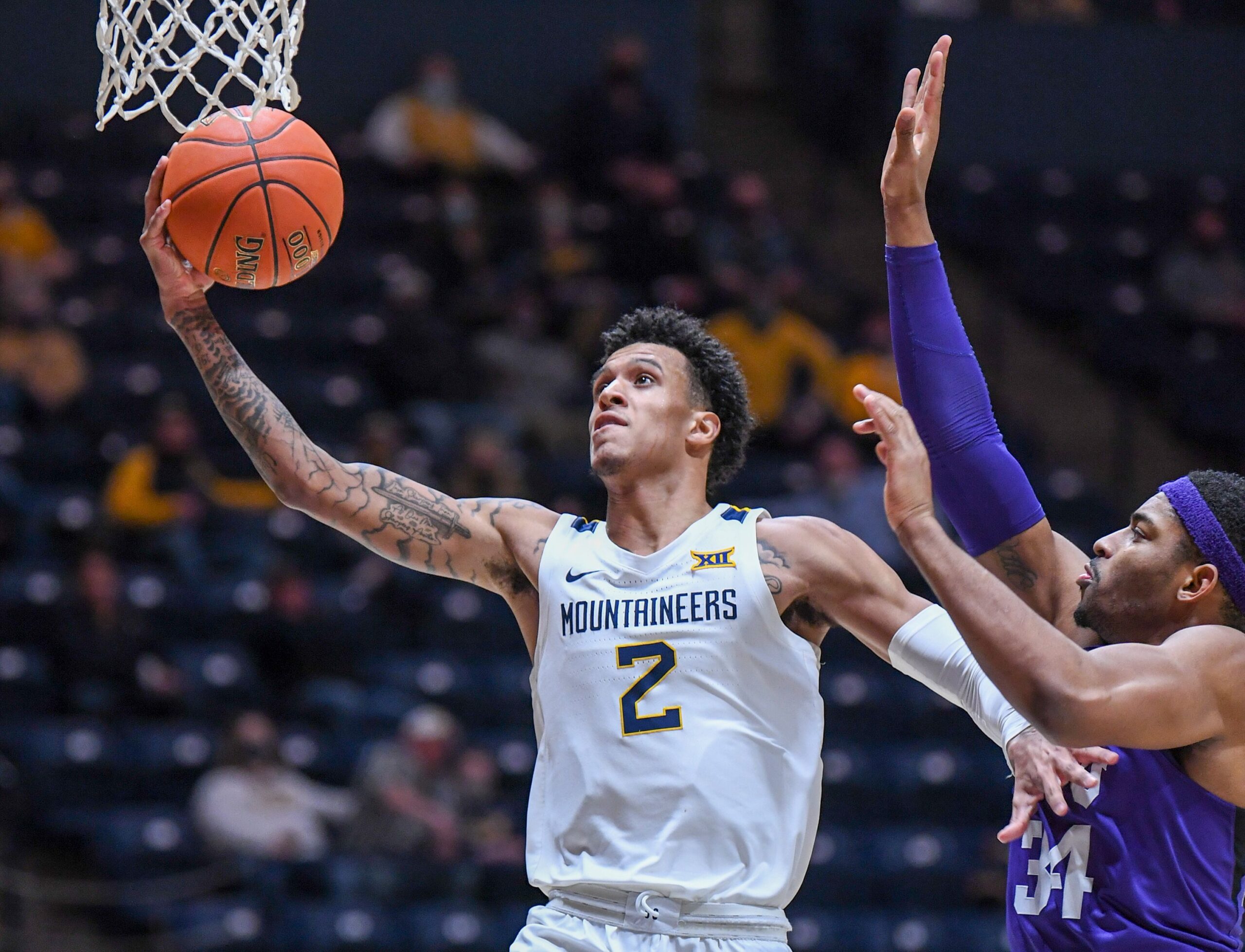Bob Huggins and the WVU men’s basketball team open practice Tuesday, either as a team on the cusp of the Top 25, already in it or considered a sleeper team for the 2021-22 season, depending on which prognosticator you prefer.
What can’t be argued is the Mountaineers are about to embark on a season with a mixture of familiar faces and some new ones who are on their final ride in college.
WVU will be counting on players who missed most of last season with an injury (Isaiah Cottrell), as well as bringing a new shot-blocking element to its defense in the form of transfers Pauly Paulicap and Dimon Carrigan.
Offensively, the Mountaineers have to replace all-Big 12 performers Deuce McBride and Derek Culver. Both left school early to enter the 2021 NBA Draft. McBride was selected in the second round by the New York Knicks and had a strong summer league, while Culver went undrafted and unsigned.
The schedule? Kansas, Texas and Baylor are considered top 10 teams. Arkansas is projected somewhere in the top 15 and Oklahoma State is projected somewhere in the 20-25 range.
UConn has been revitalized under head coach Dan Hurley and then there’s always the rivalry series with Pitt, so this group of Mountaineers will not have a cakewalk into March.
What can we expect from the Mountaineers this season? Let’s take a look:
Replacing Culver
If we can get analytical for a moment, when looking at Culver’s production, you can’t really say WVU is looking to replace his 14.3 points and 9.4 rebounds from last season.
In truth, WVU would really have to replace the 16 points and 10 rebounds Culver could have produced this season if he stayed. We came up with those numbers from the natural progression Culver showed over his first three seasons.
As far as rebounding, that can be done through the collection of Paulicap, Carrigan, Cottrell and Gabe Osabuohien, who if they all averaged five rebounds per game would more than double Culver’s output.
It’s likely Osabuohien, Paulicap and maybe even Cottrell could average more than five rebounds per game.
The scoring could be a bigger obstacle.
In all honesty, I believe Cottrell has the potential to be an impact player in the Big 12, but we haven’t seen him since he tore his Achilles tendon last December.
It would be nice to say Cottrell is going to jump in and suddenly be counted on for 12-15 points a game. Maybe next season, sure, but we still have to wait and see how he grows into a role this season.
Osabouhien is not a heavy scorer, but does everything else.
The good news is while Paulicap and Carrigan may not provide the tough scoring down low Culver did, they both shoot the ball exceptionally well.
Culver, for all of his brute strength and offensive focus he received, never shot the ball better than 50% in a season. He never came close to that, which was a problem, because the majority of his shots came from within eight feet.
Paulicap is shooting 52% for his career and Carrigan is shooting 57% for his. Neither shoot 3-pointers, so they’ve taken the same types of shots Culver did.
Culver took 312 shots last season. Paulicap and Carrigan may only combine to take half as many, but analytically could make 10% more shots at Culver’s pace.
So, where do the points come from?
The thought here is that collection of big men have just one job this season in terms of offense: They have to pose enough of a threat inside to keep defenses honest.
If Cottrell comes out and gives you 10-13 a game, no problem, because you would have to think the combination of Osabuohien, Carrigan and Paulyicap could get you another 10.
From there, you look at the perimeter with Taz Sherman and Sean McNeil. They gave you 25 per game last season. Can they get you 30 in 2021-22? That will be the question.
Jalen Bridges is the other X factor. Everyone really seems to be high on the Fairmont native. Former WVU guard Jordan McCabe once called Bridges the best pro prospect on the roster.
Bridges gave you 6.5 points per game last season while shooting a solid 49% from the floor.
Here’s the thing with Bridges, though, more than half of his shots were 3-pointers and he shot 38% from three. That means he was nearly automatic when he was shooting inside the arc.
So, what type of game will Bridges have this season. Will he stand out in the corner and launch them from deep or start to drive the ball at the rim?
What about the point guard?
Analytics may not go far enough to reach what McBride gave the Mountaineers.
It wasn’t just his 16 points per game. It was his defense, his ability to be a clutch player in the crucial moments and his willingness to put the team on his shoulders in some moments.
Can Old Dominion transfer Malik Curry give you all of that? Maybe not.
What Curry can give you, according to Huggins, is a guy who can get the ball to the rim, which is a little different style than McBride had.
That style could come into play, because if Curry can get himself into the paint, then Sherman, McNeil and Bridges could find themselves open a little more on the outside.
It will also be interesting to see how incoming freshmen Kobe Johnson and Seth Wilson are used. Both enter college with lots of potential and could become a future building block in the backcourt like WVU once had with Jevon Carter and Daxter Miles Jr.
TWEET @bigjax3211




